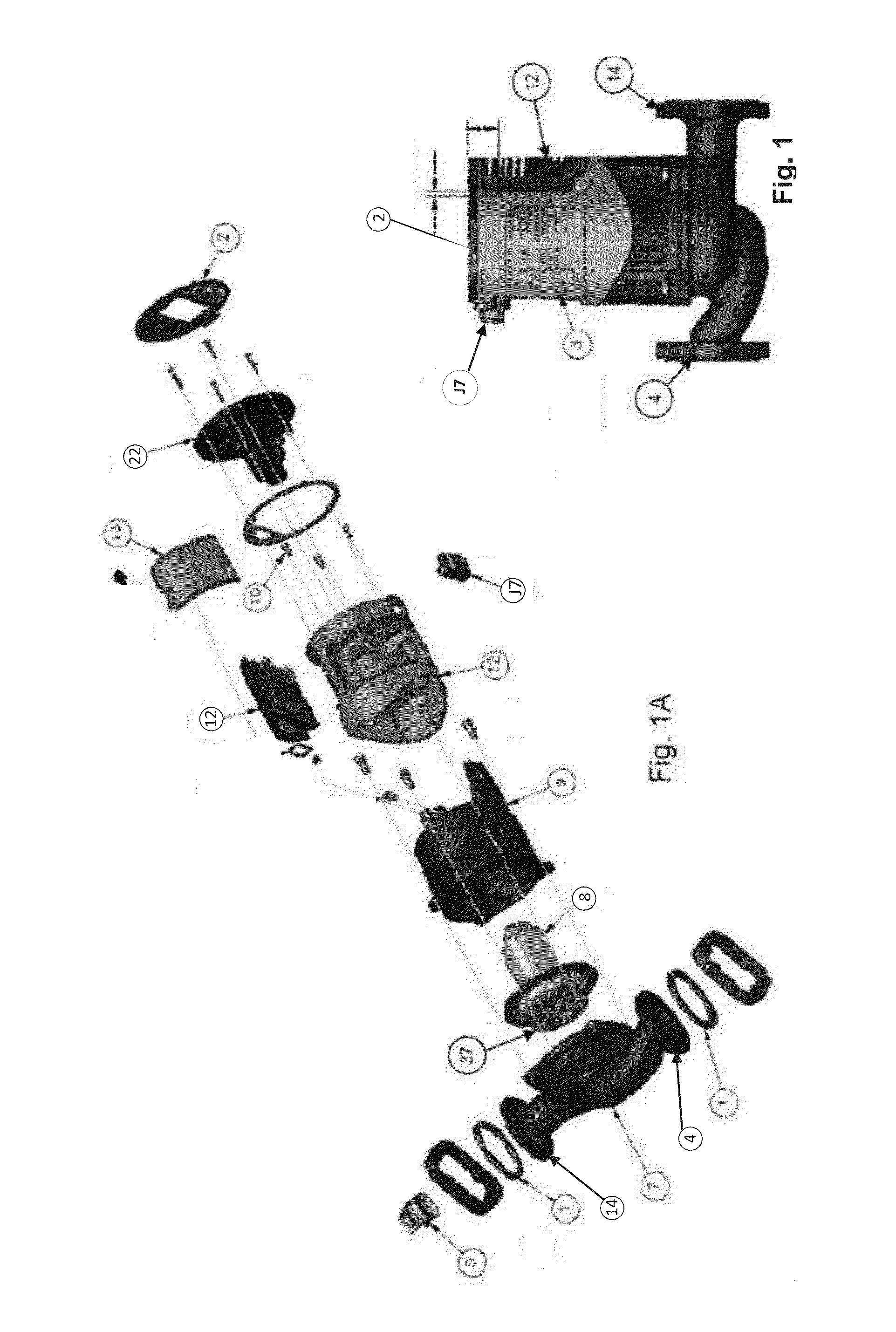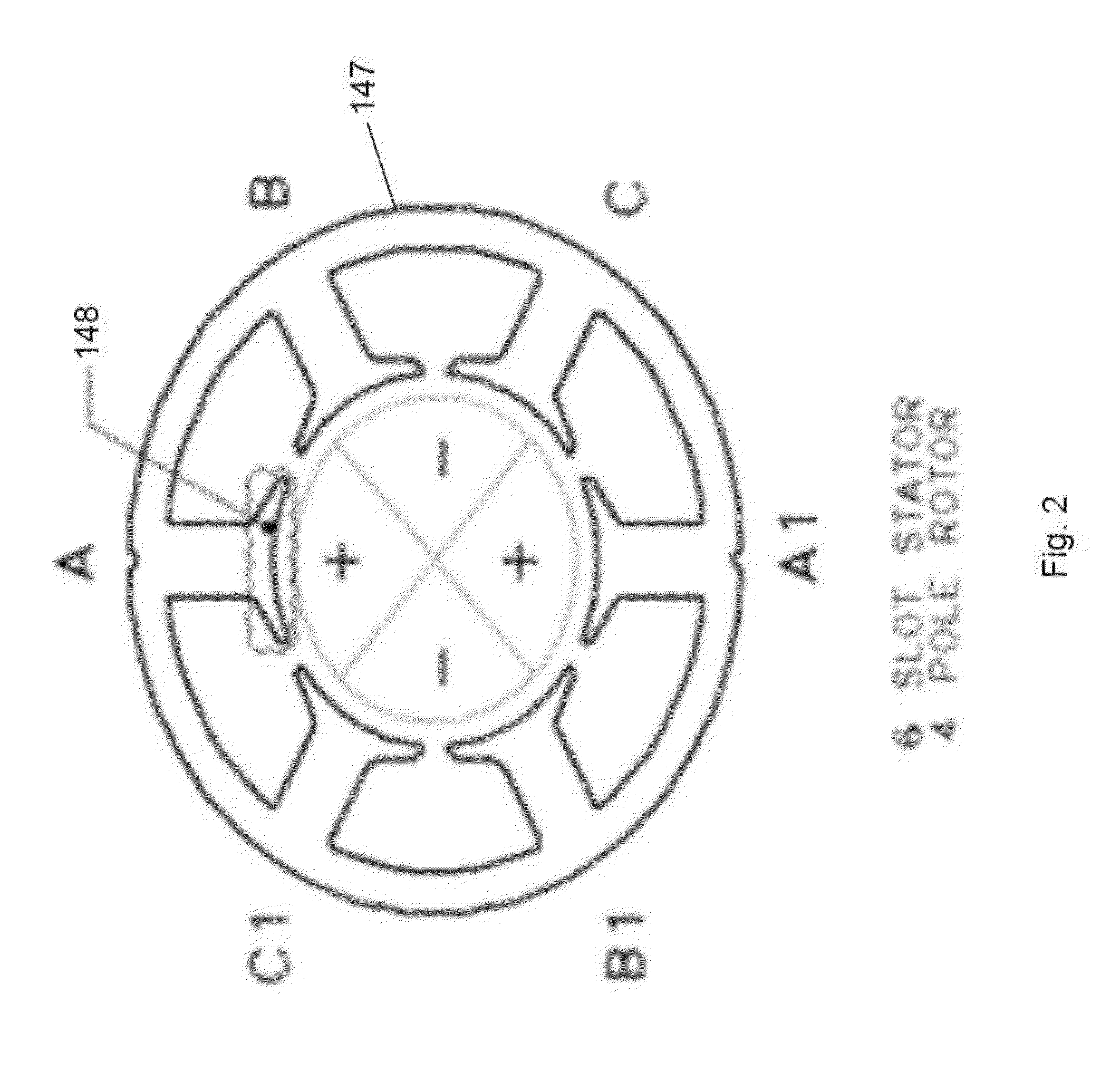High efficiency hydronic circulator with sensors
a high-efficiency, hydronic circulator technology, applied in the direction of positive displacement liquid engine, magnetic circuit rotating parts, magnetic circuit shape/form/construction, etc., can solve the problem of motors that were noisier than desirable for residential use, and achieve greater output and efficiency, reduce noise, and greatly increase the effect of magnetic flux
- Summary
- Abstract
- Description
- Claims
- Application Information
AI Technical Summary
Benefits of technology
Problems solved by technology
Method used
Image
Examples
Embodiment Construction
[0044]Referring to the drawings, the circulator includes an impeller 37, which is directly connected to a permanent magnet rotor 8 in the pump motor. The impeller 37 is held within the impeller chamber 7 and moves the fluid between the fluid inlet 4 and the fluid outlet (see fig IA). The motor is controlled by the Central Processing Unit (the “CPU”) and Digital Signal Processor (“DSP”), on the printed circuit board (“PCB”) of the motor control board, generally indicated by the numeral 116, which is directly connected to the stator windings within the housing 9. A diagram of the motor control PCB 116 circuitry is shown in FIG. 8a. The details of the sensor and power control PCB are depicted in FIGS. 9, 9A, 9B, and is generally shown by the numeral 22 in FIG. 1A
[0045]The high voltage power is passed from the power control PCB 22 via the connectors TP6, TP7, to the motor control PCB 116 through the two-pin header J6.
[0046]The details of the stator are shown more fully in FIGS. 2 and 3,...
PUM
 Login to View More
Login to View More Abstract
Description
Claims
Application Information
 Login to View More
Login to View More - R&D
- Intellectual Property
- Life Sciences
- Materials
- Tech Scout
- Unparalleled Data Quality
- Higher Quality Content
- 60% Fewer Hallucinations
Browse by: Latest US Patents, China's latest patents, Technical Efficacy Thesaurus, Application Domain, Technology Topic, Popular Technical Reports.
© 2025 PatSnap. All rights reserved.Legal|Privacy policy|Modern Slavery Act Transparency Statement|Sitemap|About US| Contact US: help@patsnap.com



